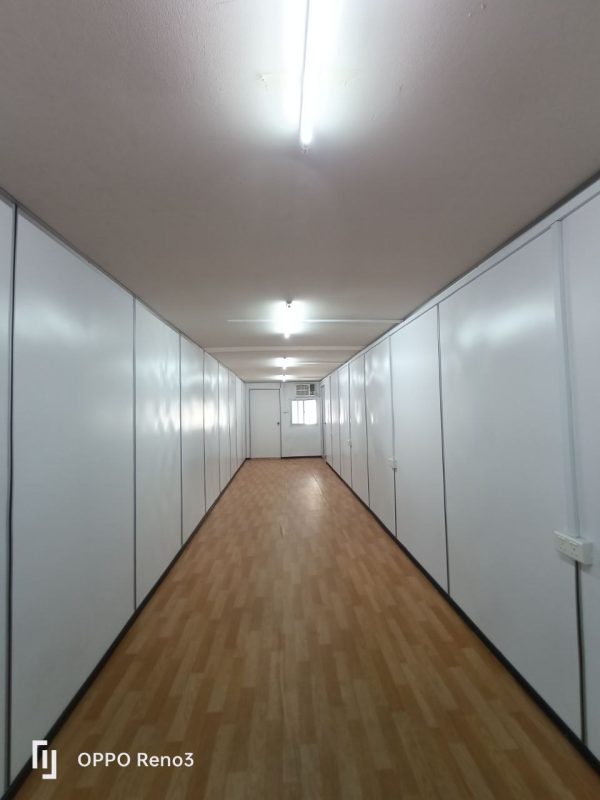Tips for Designing Functional and Stylish Shipping Container Offices

Shipping container offices are gaining popularity due to their versatility, sustainability, and cost-effectiveness. They offer a unique blend of modern aesthetics and practical functionality, making them an attractive choice for many businesses. If you’re considering designing a shipping container office, here are some essential tips to help you create a space that is both functional and stylish.
1. Plan Your Space Efficiently
Before diving into the design process, it’s crucial to plan your space efficiently. Shipping containers come in standard sizes, typically 20ft or 40ft, so you need to work within these dimensions. Start by determining your office requirements—consider how many employees will use the space, what equipment you’ll need, and the types of workspaces required (e.g., individual desks, meeting areas, or lounge spaces). Draft a layout that maximizes the available space while ensuring a logical flow between different areas.
2. Focus on Lighting
Good lighting is essential for a productive office environment. Shipping containers often have limited natural light, so it’s important to integrate both natural and artificial lighting solutions. Install large windows or glass doors to bring in natural light and create a more open feel. For artificial lighting, use a mix of overhead lights, task lighting, and ambient lighting. LED lights are energy-efficient and offer various color temperatures to match the desired ambiance of your office.
3. Choose the Right Insulation
Insulation is critical for maintaining a comfortable temperature inside your shipping container office. Depending on your location, you may need to consider both thermal and acoustic insulation. Spray foam insulation is a popular choice for shipping containers as it provides excellent thermal resistance and helps with noise reduction. Additionally, consider using insulated panels or reflective materials to enhance energy efficiency.
4. Opt for Functional Furniture
Select furniture that is both functional and stylish. Since space is limited, consider multi-purpose furniture that can serve more than one function. For example, use modular desks that can be rearranged to fit different needs or opt for built-in storage solutions to maximize available space. Ergonomic chairs and adjustable desks are also essential for creating a comfortable working environment.
5. Incorporate Modern Design Elements
To ensure your shipping container office looks stylish, incorporate modern design elements that reflect your brand’s personality. Choose a cohesive color palette that aligns with your brand identity. Sleek, minimalist furniture and decor can create a contemporary look, while vibrant accents can add personality to the space. Consider adding artwork, indoor plants, or decorative elements to enhance the visual appeal of the office.
6. Ensure Adequate Ventilation
Proper ventilation is crucial for maintaining air quality and comfort in a shipping container office. Install windows that can be opened or consider adding ventilation systems such as air conditioning units or HVAC systems. Good airflow will help reduce indoor humidity and prevent issues such as mold or unpleasant odors.
7. Prioritize Privacy and Acoustic Comfort
In an office setting, privacy and acoustic comfort are important factors. Use partitions or acoustic panels to create private work areas and reduce noise levels. If your shipping container office will be used for meetings or client interactions, consider adding soundproofing materials or installing additional insulation to ensure conversations remain confidential and distractions are minimized.
8. Maximize Outdoor Space
If possible, create an outdoor area to extend your office space. Adding a small deck or patio can provide a relaxing area for breaks, informal meetings, or socializing. Outdoor furniture, plants, and even shade structures can make this space more inviting and functional.
9. Ensure Compliance with Building Codes
Make sure your shipping container office complies with local building codes and regulations. This includes structural integrity, electrical wiring, plumbing, and fire safety standards. Consulting with a professional contractor or architect who has experience with container construction can help ensure that your office is safe and up to code.
10. Embrace Sustainability
One of the key benefits of using shipping containers is their sustainability. Embrace this aspect by incorporating eco-friendly practices into your design. Use recycled or reclaimed materials where possible, opt for energy-efficient lighting and appliances, and consider installing rainwater harvesting systems or solar panels to further reduce your environmental impact.
Conclusion
Designing a functional and stylish shipping container office involves careful planning and attention to detail. By focusing on efficient space use, good lighting, proper insulation, and modern design elements, you can create an office that is both practical and aesthetically pleasing. Prioritize comfort, privacy, and sustainability to ensure that your shipping container office not only meets your business needs but also contributes positively to the environment. With the right approach, a shipping container office can be a unique and effective solution for your workspace requirements.

